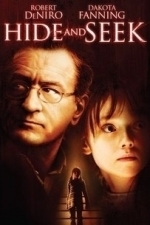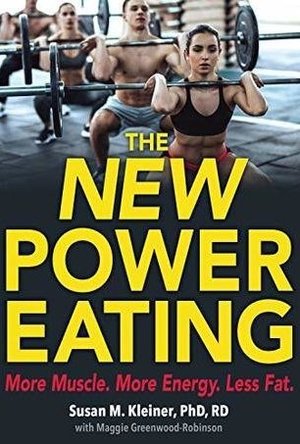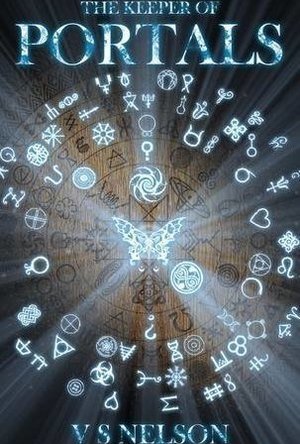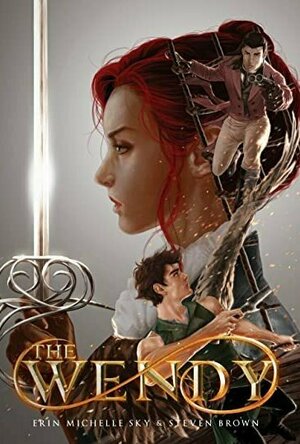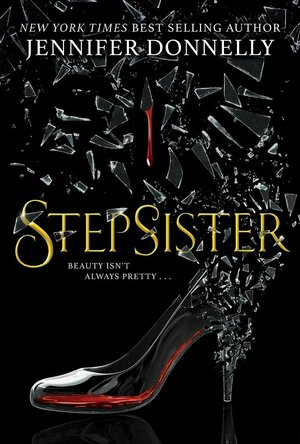Hazel (1853 KP) rated Unremembered (Unremembered, #1) in Books
Dec 17, 2018
Whilst it may be imagined that a first person narrative of someone who does not know anything may hinder the telling of the story, it actually connects the audience with the main character. As readers we also have no knowledge of what happened before the first page of the story. We learn everything as Seraphina does, the only difference being that we are aware of what certain items are – particularly technological ones – as well as being able to communicate and understand other people, not just through words but also with sarcasm and body language.
What we learn at the start is that there has been a plane crash into the Pacific Ocean with only one survivor, an unidentifiable girl with serious amnesia. Further on it transpires that there was never any record of her being on the plane in the first place. This is where all the question and mysteries begin. Temporarily given the name Violet, she is placed with a foster family, the Carson family, whose thirteen-year-old son Cody is intimidated by her flawless beauty. He begins to connect with her more after it emerges that she is a mathematical genius. So yet another question arises, how comes she can remembered how to solve complicated equations yet cannot even remember who she is?
There are also mysteries surrounding a peculiar tattoo on her wrist; a boy named Lyzender who keeps appearing, claiming to know who Violet, or should we say Sera, is; her uncanny ability to speak fluently in a range of languages; and the number 1609. What is the significance of this number? Not only is it the year Sera believes it is after recovering from the crash, it is also engraved onto a locket she was wearing along with the initials “S + Z”.
<i>Unremembered</i> is a fast paced novel whose mysteries get solved at the same time as more questions develop. It shows us how people with no experience of the modern world would struggle to understand the things we take for granted. It also poses the question of what it truly makes a human human.
I definitely recommend this novel and believe that it is something young adult girls would certainly enjoy. I am looking forward to reading the next book in the trilogy to find out what happens to Seraphina next.
Gareth von Kallenbach (980 KP) rated Hide and Seek (2005) in Movies
Aug 14, 2019
In the new thriller Hide and Seek, audiences are introduced to Dr. David Callaway (Robert De Niro), a Psychologist who is struggling to help his daughter Emile (Dakota Fanning) after the suicide of her mother. David believes that the best option is to move from New York City to a quite area upstate where he can focus on being a father to his daughter, who has become withdrawn despite intense counseling.
Despite opposition from Emily’s therapist and family friend Katherine (Famke Janssen), David and Emily relocate to a scenic and quite location and hour from the city.
At first everything seems to be going well with the move and David meets an attractive young lady named Elizabeth (Elisabeth Shue), who watches over a little girl for another member of her family. Thinking that a friend will snap Emily from her state, David encourages Elizabeth to come to the house.
David is convinced the addition of a friend will encourage Emily to stop talking about an imaginary friend named Charlie who seems to have preoccupied the little girls time. David is convinced that Charlie is a creation of Emily’s psyche that will fade over time especially as she makes friends and copes with the loss of her mother.
Emily instead withdraws even further from people and a series of bizarre and violent events ensue with Emily insisting that Charlie is the reason behind all of them. As David struggles to deal with the ever increasing tension caused by Charlie, he soon becomes caught up in a situation beyond his control.
The setup for the film is good as your mind races with a myriad of possibilities and outcome. Sadly many of my scenarios, and I suspect most of the audience were better and more satisfying then the conclusion of the film. The film quickly degrades into an abundance of absurdities and situations that seem lifted from the Drama 101 textbook as well as a dozen other and better films in the genre.
While the cast does good work with what they have, it is unsatisfying to see talent like Shue and Janssen reduced to minor supporting characters when they could have brought so much more to the film. Worse yet is De Niro seems to be going through the motions as this brilliant and gifted actor is not given any material that will challenge him and let his brilliant method acting shine.
For the first half of the film it is a mostly enjoyable and intriguing film that does hold your attention. However once the so called surprises of the film are revealed and the film moves towards it’s conclusion, you cant help but think that you have been cheated and deserved a much better payoff for sitting through the first hour of the film. Days after seeing it, I am still stunned at how badly the film ended and how such a good premise and talented cast were horribly wasted on a film that had surprisingly no scares or tension as the audience at my press screening sat largely in silence throughout the film.
My advice, save this for a rental as it is at best, a movie of the week quality film.
Ivana A. | Diary of Difference (1171 KP) rated The New Power Eating: More Muslce, More Energy, Less Fat in Books
Jan 25, 2019
But, with this book, it was different.
For some of you, that know me better, I used to train karate since I was a child. My father was my coach, and I trained hard, more than four days a week. I was a national champion for 8 years, I went on Balkan, Regional and European Championships, the sport enabling me to travel in more than 15 countries, explore the world and make countless number of friends along the way.
And in my whole journey, there were many experts surrounding me. Firstly, my father, who was my coach, showing me the karate world and teaching me everything I know today. Along his side, other coached, psychologists, gym experts, and nutritionists.
‘’The field of sport nutrition practice is both a science and an art.’’
When it comes to nutrition, it is so easy to get it all wrong, while you think you are doing something healthy to your body. It is so easy to mix good with bad fats, and thinking you eat healthy, to get away from your goal and become disappointed. And that is the sole reason why we need people that really know their nutrition, and dedicate their lives to learning what each ingredient does to our body.
This book focuses on nutrition for sports people. A way of life and healthy eating, while you spend a lot of energy exercising. I could easily relate to this, as I myself have been through all of these phases, of being dehydrated, of needing more fat, of needing more protein and vitamins in my body, without even realising it.
‘’When females perform high-intensity training, their need for carbohydrate is easily as high as that of a male athlete, and they have just as much capacity to utilize and store carbohydrate as a male athlete.’’
In this book, you will find explanations on all subjects that are often asked, you will know what builds muscle, what fuels it. Many popular issues will be covered as well, such as the gluten problem that many people face this days.
I loved the section about fats, as I have been introduced to the keto diet recently, and it was good to read and learn more about how fats work in your body, and what happens when you burn them.
I enjoyed the snack and workout plans, that are also split depending on what you want to achieve, whether that be building muscle, losing fat, or power eating.
‘’Research on sport nutrition in female athletes has long been neglected, but now there is breakthrough scientific knowledge that is changing the game of female athletes, including young girls.’’
If you love working out, and love your healthy food – this is a great book to have along your side, and come back to it from time to time, to remind yourself of everything your body is capable of doing, if you treat it right.
I highly recommend it – I enjoyed it a lot!
Thank you to Edelweiss+ and Human Kinetics for providing me a free copy of this book, in exchange for my honest review.

100 PICS Quiz
Games and Entertainment
App
The world's greatest picture trivia game ● Over 10,000 pictures to play ● Play over 100 quiz...
Hazel (1853 KP) rated The Keeper of Portals in Books
Dec 17, 2018
Awaiting young adult readers in early 2017 is a fantasy story unlike any other. <i>The Keeper of Portals</i> is the debut novel of V.S. Nelson, the soon-to-be-published author with an imagination worth sharing. Incorporating the familiar concept of time travel into a new way of visualizing the world results in a story that will leave minds reeling.
Nelson’s theory is that every aspect of life has a keeper, a creature in charge of making sure their assigned element functions smoothly. There are the major keepers responsible for time, causality and other things that cannot be seen, yet objects as small as buttons have their own keeper, too. Humans, of course, are unaware of these keepers, therefore fifteen-year-old Martin Lockford initially believes he is going mad when the Keeper of Portals reveals his existence in Martin’s bedroom.
Martin and his mother, with nowhere else to go, have moved into a dilapidated manor once owned by a distant relative. Whilst exploring his new room, Martin is startled by a disembodied voice claiming to be the Keeper of Portals. Having not spoken to anyone for 400 years, Portals is eager to show off his role in the flowing of the unpredictable universe. The keeper’s task is to make sure each door leads to the correct place – something that he demonstrates by sending Martin to the <i>wrong</i> places. However, there is one door in the manor that he has been unable to open.
The very next morning, Martin awakes to discover the sealed door is no longer locked and, being the curious boy that he is, goes through to explore. The mystery door does not only transport Martin to a different place, it sends him back in time to 1623. Here he meets the young Isabel, a maid, who is intrigued with the inventions of the future, especially from a personal hygiene perspective. However, she is not the only one curious about the 21st century.
The irascible master of the manor is not who he initially seems. With the desire to control everything, he places Martin and Isabel in a grave predicament, trapping them in the 17th century. At risk of creating a paradox, Martin needs to return to his own time – a difficult feat in itself – however, with the Keeper of Portals missing, the master has caused many problems that need to be solved, otherwise a whole new future will be born.
Admittedly, it takes a while for the story to warm up – the reader may be introduced to the idea of keepers fairly early on, yet the key storyline does not reveal itself until much later. After perseverance on the reader’s behalf, <i>The Keeper of Portals</i>, becomes an exciting mix of fantasy and science fiction, cleverly thought out to create an unpredictable scenario. Adventure after adventure, until bittersweet conclusion, keeps readers engaged and compelled to read on long after bedtime.
Although Martin is the protagonist of the novel, Isabel’s role is equally important. Despite women in the 1600s being deprived on the rights they have in this day and age, Isabel is an intelligent, independent girl, perfectly able to handle everything that is thrown at her. She is an inspiration to teenage girls.
Written with teenage readers in mind, <i>The Keeper of Portals</i> is suitable for fantasy-loving adults, too. With equipoise of adventure and intellectual theory, as well as a touch of romance, it is definitely a book to look out for. V.S. Nelson writes with clarity, exuding remarkable intelligence; let us hope that there will be more from where this came from.
Lottie disney bookworm (1056 KP) rated The Wendy (Tales of The Wendy #1) in Books
Dec 29, 2020
Enter Erin Michelle Sky and Steven Brown with their Tales of Wendy series to prove me wrong! The Wendy is the first in this series but I am already desperate to finish the second book, The Navigator before their third is released at the end of this year.
The Wendy, as you may expect, centres around Wendy Darling. However, this is not the prissy, mother-idolising figure I love to roll my eyes at: oh no, this Wendy Darling is growing up in the late 1700s in a London orphanage. In a world where her sole career option seems to be to become a mother, this feisty ten-year-old would prefer to “marry Davy Jones than grow up and look after babies”. This Wendy Darling is the one I have been waiting for.
Wendy’s dream is to join the Navy and sail the world. Unlike the rest of 18th Century Britain, she doesn’t see why being a girl should prevent this.
Therefore, over the years she becomes adapt at mathematics, science, navigation, marksmanship and swordsmanship. Nevertheless, despite being just as good, if not better than her childhood friend Charlie, he earns the rank of Officer in the British Navy whilst Wendy is assigned to the Home Office as a Diviner, one who can detect the presence of magic: a post to be filled only by women and dogs.
It is here that the reader meets John and Michael: Wendy’s “brothers-in-arms but in no way related, despite what you may have heard”. They are all stationed in Dover Castle, along with the Brigade’s dog Nana (who else?!). Their mission: to protect Britain from a magical threat, the innisfay or “everlost”, whom are known to kidnap orphans. Sound familiar?
The Wendy is definitely the best retelling of Peter Pan I have read so far. Despite the presence of all our favourite names, the characters are a far cry from their animated counterparts. Michael and John are wonderfully dry and sarcastic; Hook is powerful and attractive; Tink is a shape shifter; Peter, despite possessing a pair of wings and armour, is essentially the same and Wendy is an ambitious, feisty, yet beautifully flawed protagonist.
There are many little nods to the film which are greatly appreciated. Wendy “moving out of the nursery” means leaving the orphanage and gaining an apprenticeship and “thinking happy thoughts” as a means of flight is a practical joke by Peter to make Wendy smile.
Sky and Brown’s conversationalist style of writing makes this a very easy read, despite Wendy galloping all over the South of England with a variety of characters. It also allows the reader to really bond with Wendy and empathise with her and her struggles to achieve the employment she has longed so for since childhood.
As you may have gathered, sexism plays a large part in Wendy’s uphill struggle: as the only main female character she is constantly undermined in her ambition to become a sailor. Even when she proves to be useful in her post within the Home Office she is removed to the country “for her own safety”. Those men whom do not undermine her moon after her romantically: it truly is infuriating.
In some situations, this ingrained attitude was slightly heart-breaking but equally a sign of the times in which this novel was set: Wendy’s thoughts often returned to the propriety of her actions and the danger she experiences just through wearing “men’s clothes” is powerful moment. However, Wendy never lets these attitudes halt her ambition, ending her first novel as a true inspiration to girls following in her footsteps: Navigator Darling.
I can’t wait to discover the next step in her journey which, conveniently, lays past the second star to the right and straight on till morning!
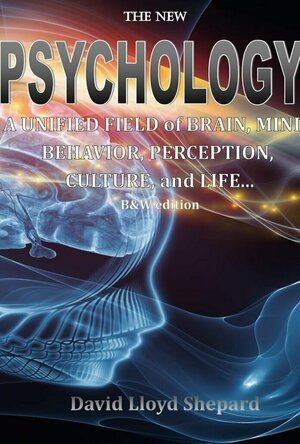
The New PSYCHOLOGY
Book
From the mind of genius to the suicide bombers of today’s news, from science to sex, understanding...
Lottie disney bookworm (1056 KP) rated Stepsister in Books
Aug 16, 2019
Judging purely by the title of the book: the cynical side of me expected this to be a retelling of the traditional fairy tale from the viewpoint of the “ugly stepsisters”. Perhaps with a remorseful twist and a concluding reconciliation. I could not have been more wrong.
This is possibly the first time I should have judged a book by its cover: the iconic glass slipper casting fragmented shards across the jacket should have certainly forewarned me that this will not be just another Cinderella story.
Unlike the twisted tales and the villain series, Step Sister is, as far as I know, not connected to the Disney enterprise at all. This makes it an edgier read by far but also allows the novel to lean as far away from the traditional fairy tale as it dares: smashing just a couple of stereotypes along the way.
Oh, and just a quick point: the novel opens on Isabelle and Octavia disfiguring their own feet, at the command of their mother, with the aim to fit into the glass slipper and marry the Prince. See what I mean- edgy right?
Stepsister is told from the viewpoint of Isabelle: a headstrong girl with an ambitious mother, an intelligent sister Octavia and a kind, sweet sister, Ella. Isabelle is a disappointment to her mother: a plain girl who prefers riding and fencing to corsets and suitors. A number of flashbacks to the girls’ childhood also suggests that Isabelle, Octavia and Ella were once very close, leading the reader to wonder how the relationship became the poisonous one we are so familiar with.
Unsurprisingly, their Maman’s plan to mutilate her way to the palace does not succeed and Ella takes her rightful place by the Prince’s side, claiming her ‘happily ever after’. But what is to become of the family she leaves behind? Maimed and outcast, Isabelle and Octavia struggle to carry on once their actions are brought to light and they are promptly labelled the “ugly stepsisters” by all around them.
Desolate and lost, Isabelle mistakenly believes that her life would improve if she were more attractive and makes a wish to the fairy queen Tanaquill, who promises to grant her desire when Isabelle finds the three missing parts of her heart.
Thus, begins Isabelle’s mission to reclaim her heart and turn her life around. The stepsister’s road of discovery is a bumpy one however, and is not made any easier by an old crone named Fate and a young man named Chance, both of whom seem to have an unhealthy obsession with her progress and a strange, almost friendly rivalry over the possession of Isabelle’s life map.
Jennifer Donnelly introduces us to a number of characters throughout Isabelle’s journey, all of whom are exquisite: Chance is an eccentric debonair with an entourage that may have just stepped out of The Greatest Showman; Octavia is every nerdy, sarcastic girl’s dream and even Fate is strangely likeable. It is truly impressive how Donnelly can make us feel like we know these people within the space of 470 pages.
I was also impressed with how different Jennifer Donnelly’s characters are from everything I have read before. Even Tanaquill is not the fairy godmother we all know and love. She isn’t even the slightly bonkers Helena Bonham-Carter version! There isn’t a bibbidi bobbidi boo in sight for this talon-fingered shapeshifter and she certainly does not grant wishes easily.
As a result, the reader does not quite trust the fairy queen: there is always an aspect of her that seems evil. Alas, this is another stroke of genius by Donnelly: the fairy queen doesn’t look like Tinkerbell or the Blue Fairy and so we don’t trust her- even when she is helping Isabelle and why is that? Because of her appearance? Well that makes us just as bad as those who persecute Isabelle!
Ella features very little in the novel. This is not wholly unexpected: it is not her story after all. She is frequently referred to and heavily present in Isabelle’s evolution but, out of all the characters, we know Ella the least. This is not to say that Donnelly presents Ella as a 2D character in order to prevent us from preferring her to our feistier protagonist: in fact, Ella slowly reveals a darker side to her own tale. Simply put, she does not have the depth and human rawness that Isabelle has. Isabelle appeals to the insecure teenager in us all: never believing that she is good enough, focusing on her flaws and judging herself based on the opinions of others.
When Isabelle finally finds the pieces of her heart and has to literally fight to achieve her happy ending, she automatically looks to one of the male characters to lead. After all, it has always been instilled into her that she is “just a girl”. However, Chance and his entourage have educated Isabelle as to the potential of her sex and it is through this inspiration that Isabelle and the reader realise that the answer has been there all along: the answer is Isabelle. All the childhood flashbacks of riding and fighting have been breadcrumbs for the reader: Isabelle is a warrior- her life is not mapped out by Fate or Chance anymore; she can decide her own path.
Step Sister holds up a gigantic mirror to the way we judge beauty and shows us what it really means to be a girl. Jennifer Donnelly proves that being strong, brave and, most importantly, true to yourself is what makes you beautiful. In fact, it is not until Isabelle accepts herself that she is described as beautiful and, by standing up for what she believes in, everyone achieves their own happy endings. As a mum of two young boys I really appreciated how Octavia’s love of science and math and Felix’s creativity and love of art directly contrasted with Maman’s old-fashioned desire to “marry off” her daughters. This story is no fairy tale: it is real, it is edgy and it is telling all generations that life is what you make it.
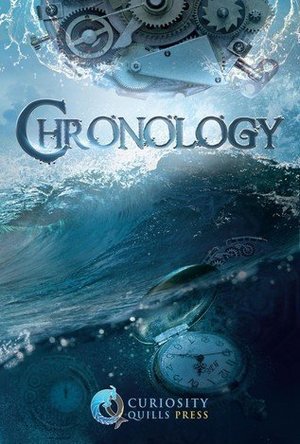
Curiosity Quills: Chronology
Richard Roberts, Tony Healey, Piers Anthony, J.R. Rain, Jordan Elizabeth Mierek, James Wymore, Stan Swanson, Darin Kennedy , Julie Frost , Andrew Buckley , J.P. Moynahan, B. C. Johnson, J. P. Sloan, Andrew J. Rausch, Katie Young , Scott Nicholson, Wilbert Stanton, Tara Tyler, Mark W. Woodring, J. E. Anckorn, Nathan L. Yocum, G. Miki Hayden, Matthew S. Cox and Matthew Graybosch
Book
It's time... for time! Embark on a literary journey through the ages with Curiosity Quills Press in...

